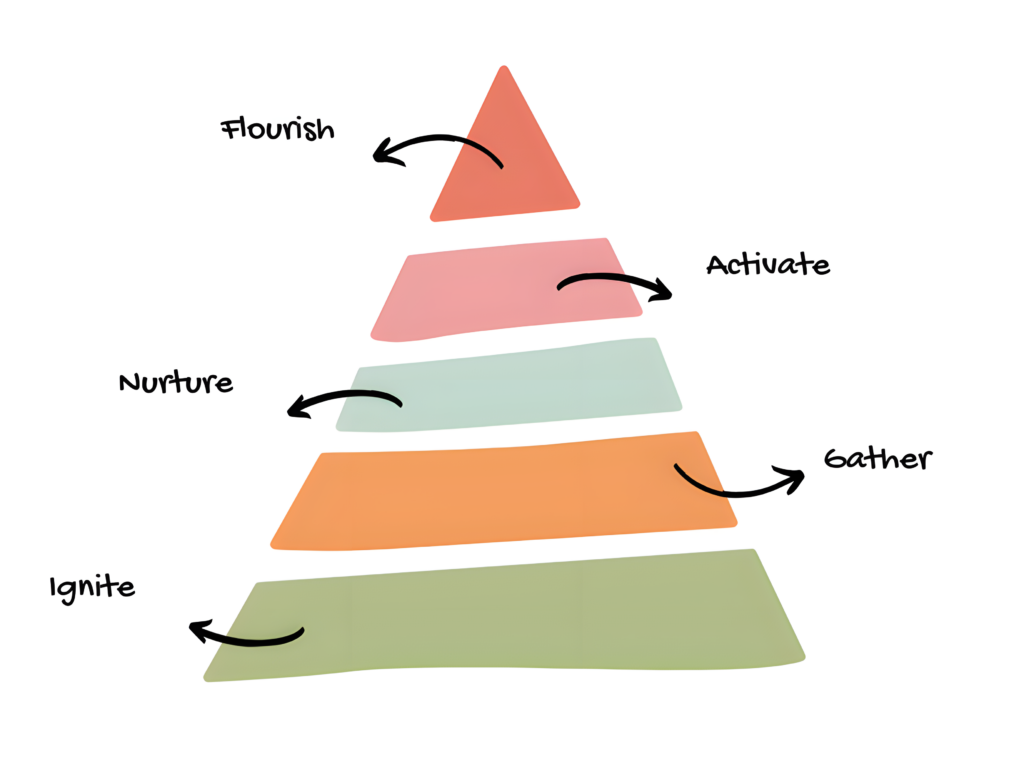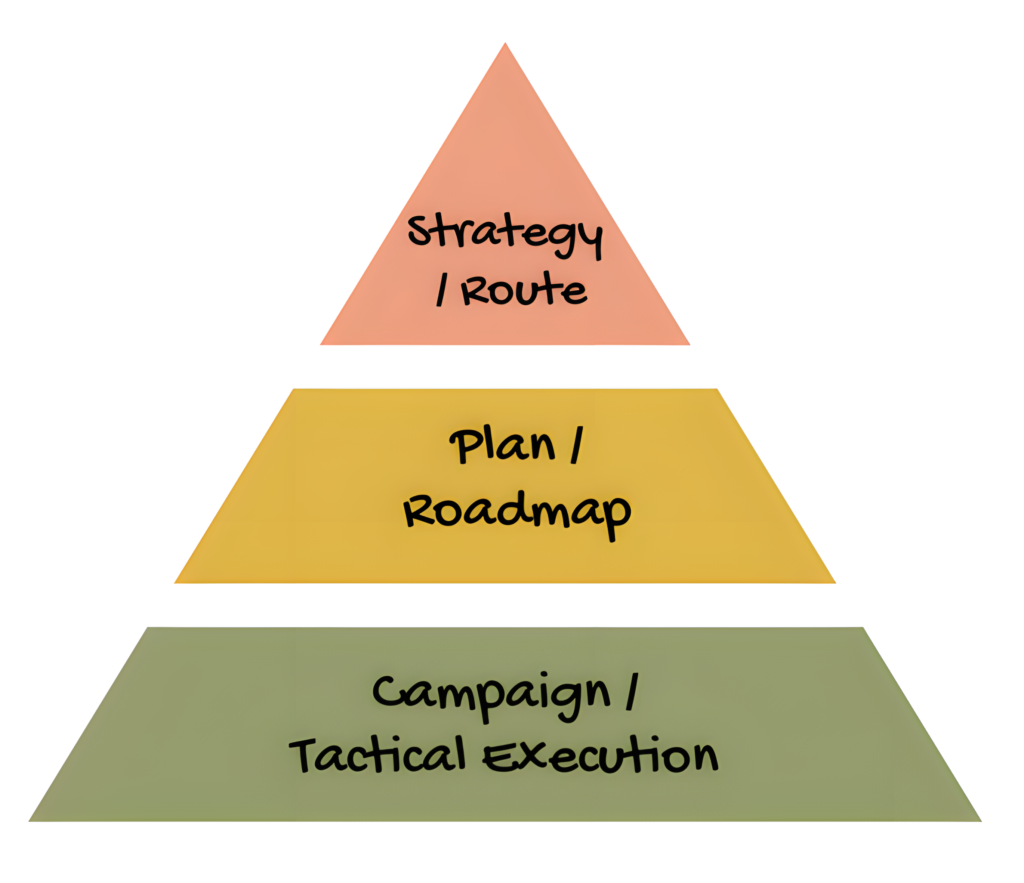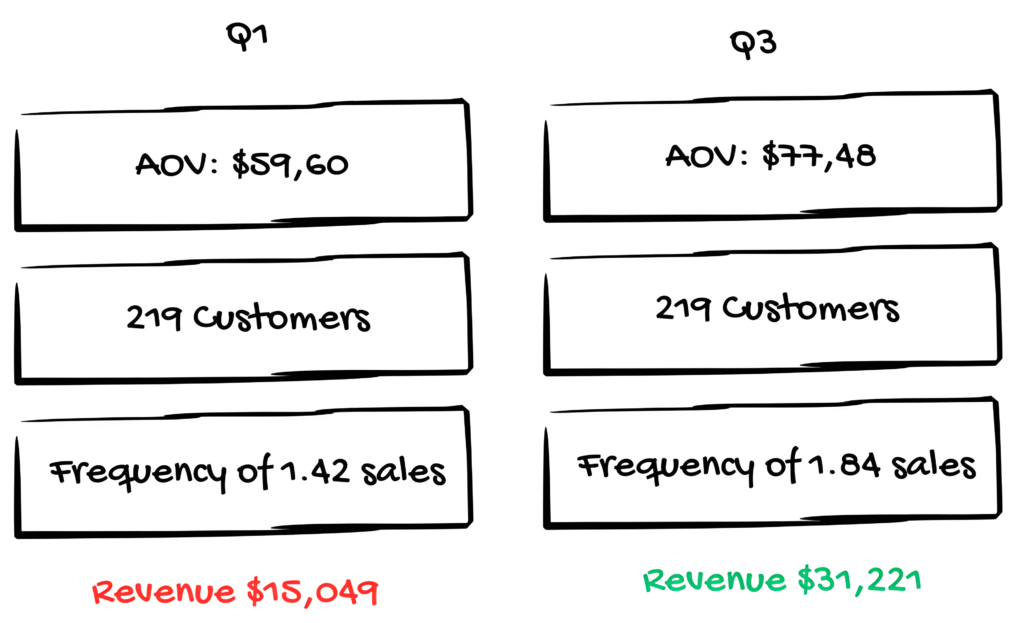
The reason behind today’s marketing chaos is because of all the available strategies out there. Or in other words, too much information. Too many gurus and self-proclaimed experts sell overpriced content and the number of noise tactics published daily is rising more and more everyday.
And when you spend endless hours devouring all this wisdom you’ll also become insane. So, no wonder you have have doubts about your own marketing abilities.
Before you can escape your current state you need to face the stories (or lies) you tell yourself.
I am not sure where to start with marketing
First of all, the starting point is irrelevant.
Especially if you don’t have a clear strategy you can follow. The thing is there are so many options available for you nowadays. So, you need to find out what works and ditch what is not as quickly as possible. This isn’t easy I know.
The real issue is, often you use disconnected tactics that don’t fit into a broader strategy. And I don’t want to make you feel guilty here. But I will be honest with you. If your marketing doesn’t work, you can’t just continue doing the same things and think something will change.
I don’t have time to handle it all myself
This is simply not true. The reason why you currently think so is because you try to do everything. And I don’t blame you.
You’ve been told to do this, then that and then X. While in fact, you should not try to do everything. You should only run campaigns that are profitable.
I can’t afford to advertise properly
Sure? Running ads and following up with customers is not expensive. If you know the numbers marketing will no longer be an expense for you, rather an investment. And marketing itself should always be an investment. Spending money is a serious matter, unfortunately some business owners seem oblivious to this.
If you lack a clear strategy, then marketing seems expensive and will inevitably become expensive. But, for now trust me, if you know your numbers marketing will soon be an investment that will pay off.
I am not competent enough
Whenever I see a business owner struggling with marketing it can always be boiled down to the core problem of
finding the time and resources to effectively market their business
And because of this very problem they start to make costly mistakes by trying everything. Unavoidably, sooner or later they conclude “I am not competent enough for marketing; I can’t do that”
So, how can you escape the midst of today’s marketing chaos? The answer?
Understand marketing from a big-picture perspective, and you’ll start to see the mazes within it.
Marketing Questionnaire
Try to answer all questions as detailed as possible.
- How many customers per week/month/quarter/year?
- How have you built your business successfully? In other words, how did you achieve to be here today?
- If you attract leads, how many days go by till they buy?
- How much does a lead cost to acquire?
- Does your average customer come back after the first purchase?
- Can you come up with any incentives to increase the likelihood of repeat purchases?
- Who is your competition and how do they get their customers?
- Where do you get your present customers from?
- What kind of marketing (advertising) have you done?
- What has worked? What has not worked?
- How much could you afford to spend on marketing over the next 100 days?
- Of all the customers you currently have, where did most of them come from? (Facebook, Google, Organic, Word-of-Mouth – aka referral, etc.)
- How much of your business currently comes from referrals?
- Have you ever given away free samples of your product? If, how did it work? Was a transaction conducted after you gave away the free sample or not?
- After a new customer buys the first time, do you have a follow-up procedure to encourage repeat purchases?
- How often – on average – do you communicate with your customers?
- How much have you spent in the last year on advertising?
- And how much do you typically earn for each $100 spent on advertising?
- What’s the lifetime value of your ideal customer? How long does he stay with you and how often does he purchase?
- Can you identify where your best customers come from? What products do they usually purchase and how often?
- Do you have any strategy in place to increase the average order value?
- What kind of guarantee do you currently offer? And what is the industry’s standard? Can you trump it?
- What are the results your customers get from using your product?
- What specific problems do you solve for your customers?
- Why should they buy from you? What is your unique advantage/benefit/feature?
- What advantages and disadvantages do you have over your competition?
- What is the background of your product? Is there a story about how you create them? In a unique way? Do you use a better process to manufacture the product?
- What is your current average order value and purchase frequency?
- What is your current customer acquisition cost?
- What is the ratio to your lifetime value? In other words, how much do you invest in getting a new customer and how much does this customer spend over his lifetime?
Start to Categorize All Activities
Figuratively speaking, build five buckets and drop everything into the correct one. Yes, there may be some activities that could fit into two buckets (stages).
What I want to stress here is that there is no right or wrong. You don’t need to get this 100% right.

Think about everything you do, the advertisements that are running, the blog posts you publish, the Social Media postings, your email follow-up sequences, …
What I want you to do is to first categorize them all and then start to draw the process.
Draw the Processes
Ask yourself what is happening. The potential customer clicks on the ad to which page to you lead him?
What happens if he doesn’t buy it?
If he purchases what are the email sequences afterwards? Besides the generic thank you email?
Calculate all your KPIs
For all campaigns start to calculate your numbers.
- Customer Acquisition Cost
- Cost per Lead
- Conversion Cycle
- Lead to Conversion Rate
- Conversion Rate
Then, on a higher level (for all the campaigns you run, find these numbers out)
- What is your average order value?
- What is your customer churn rate?
- How many reviews do you get from customers?
- How many referrals
- What is the purchase frequency of your customers?
Then calculate your lifetime customer value.
Create the Strategy

Let’s start with the strategy to increase your revenue.
What is your current of Average Order Value (AOV), Purchase Frequency (PF) and how many Customers do you have?
Write it down and work within your existing budget to increase both AOV and PF. If you only increase both by 30% you can double your revenue within 100 days.

Examples of strategic goals:
- Increase Average Order Value (AOV) from $47.33 to $60 within 12 months.
- Grow the number of customers by 20% this year.
- Boost purchase frequency from 1.5x per customer per year to 2x per year.
Then, break each strategic goal down into the objective of a marketing plan.
Marketing Plan
A plan has four parts, each one equally important.
- objective
- time-based
- budget
- associated campaigns
First you define the objective. For example, if the goal is to increase AOV based on the strategic goal, then this would be your objective
Increase AOV from $47.33 to $55 within 6 months by introducing product bundles and upsells
Now, you also need to define a budget. How much can you afford to invest in achieving this goal? You might say $1,500. Then this is the budget for the plan and all campaigns that are associated with this plan inherit this budget.
Campaigns
Define all campaigns that will help you to achieve the objective of your marketing plan. Advertisements, the emails, in short, everything you do in order to achieve the marketing plan objective.
For example, if the objective is to increase AOV:
- Campaign #1: Facebook ad campaign promoting product bundles
- Campaign #2: Email marketing sequence offering personalized upsells
- Campaign #3: Loyalty program incentives to encourage bulk purchases
Remember, all three campaigns will have a budget that is combined less than or equal to $1,500.
Improve Campaigns Based on KPIs
Track for all campaigns the appropriate metrics.
And ultimately for your whole marketing infrastructure know all metrics summed up. What do I mean by that? Do you know the average Customer Acquisition Cost for Facebook Channel? For Google?
How much is a customer worth (LTV) for a specific channel? This provides insight into how much you can invest in a particular channel without losing money in the backend.
Of course, each channel has different acquisition costs, conversion rates, etc. Yet, most business owners don’t know that. So, take this as an advantage over your competitors.
Plus, some channels will bring quality customers (the ones who spend a lot of money) and bad customers. In other words, the one-time buyers, who never buy again. And remember to use the forecasting technique to know where to invest more.
Leave a Reply